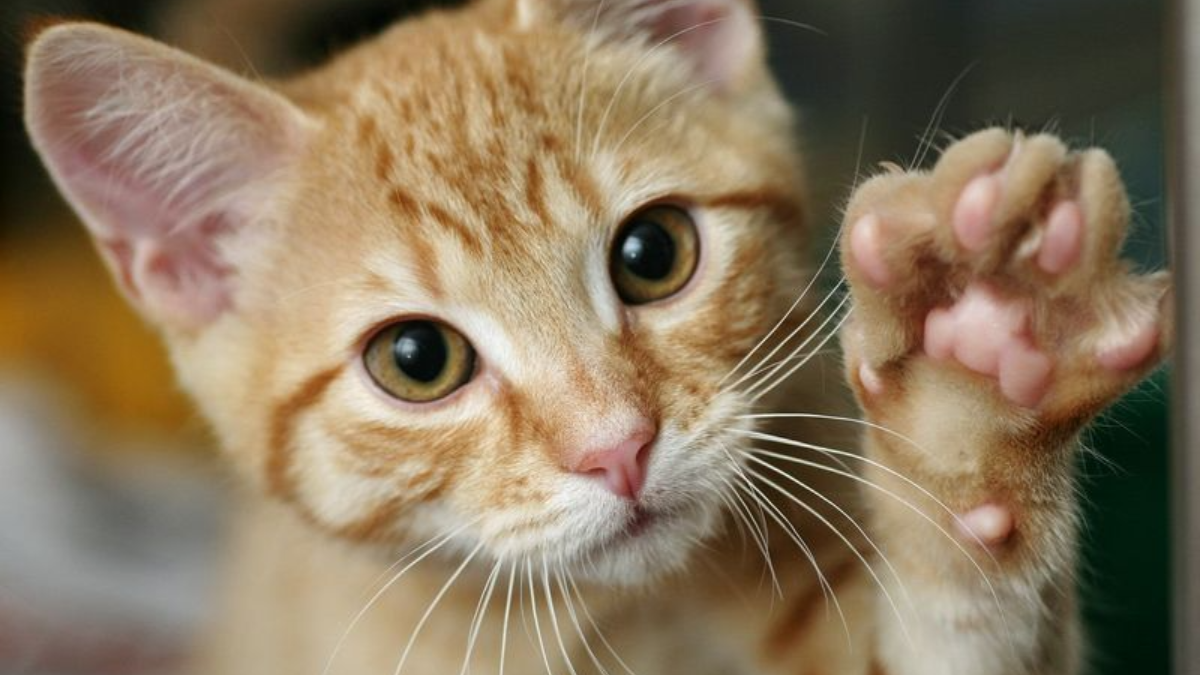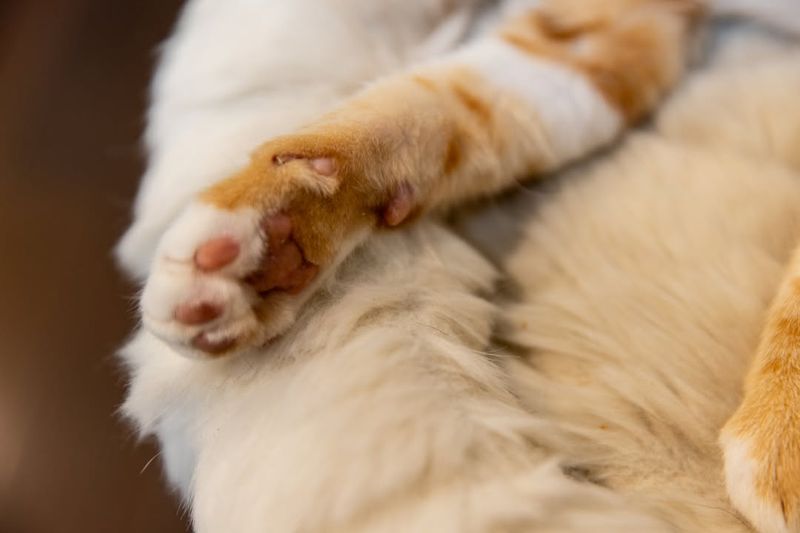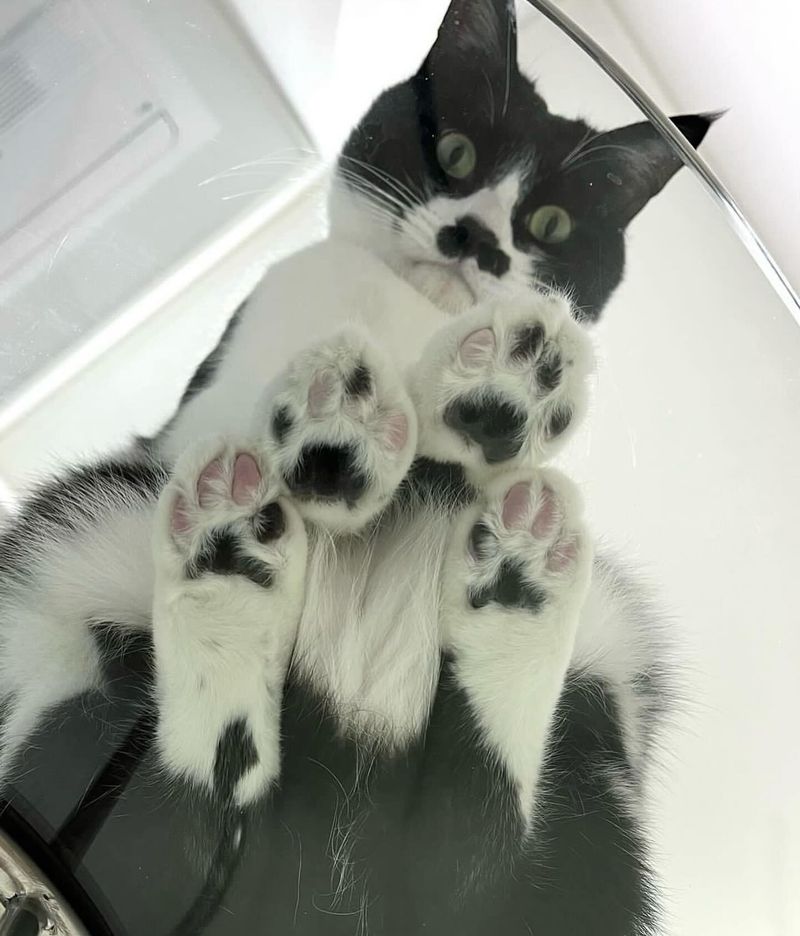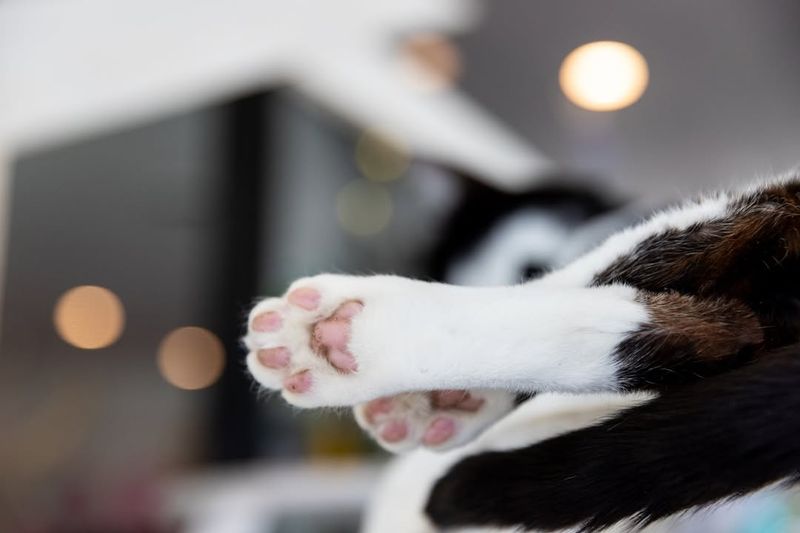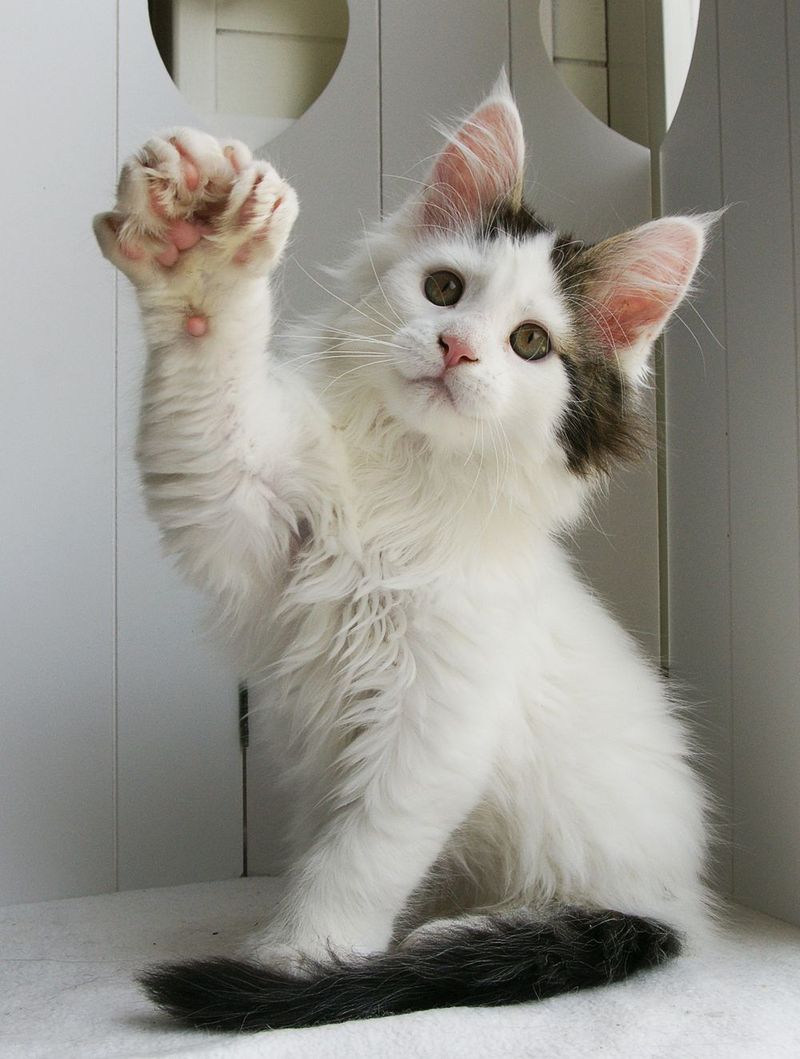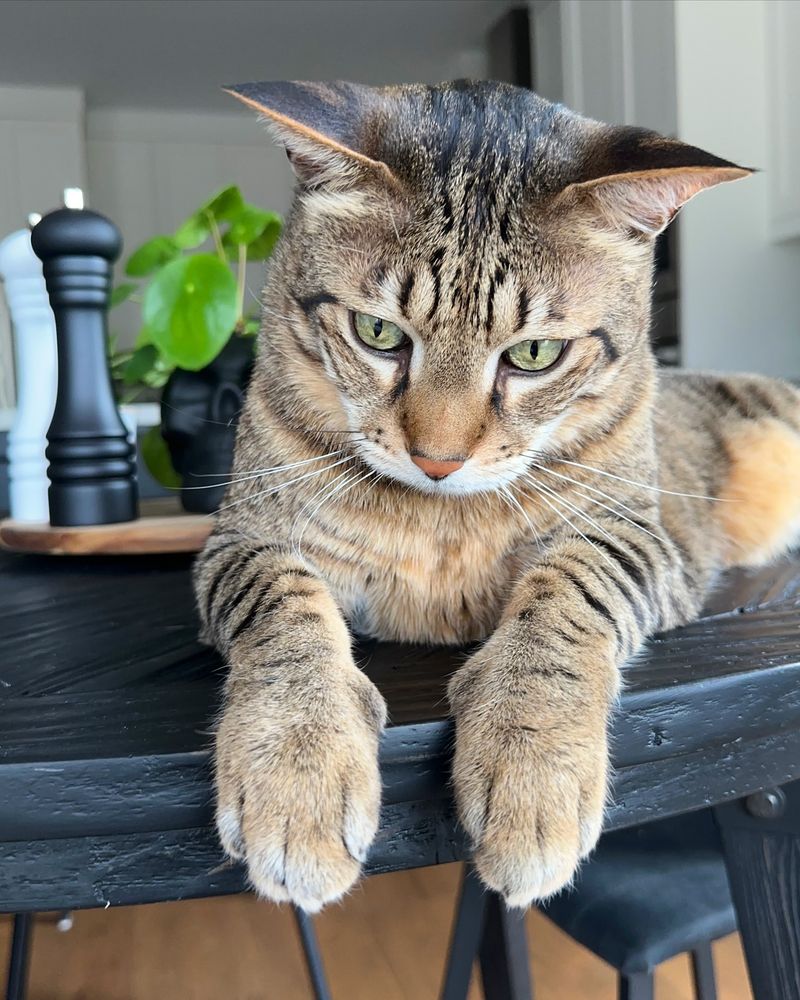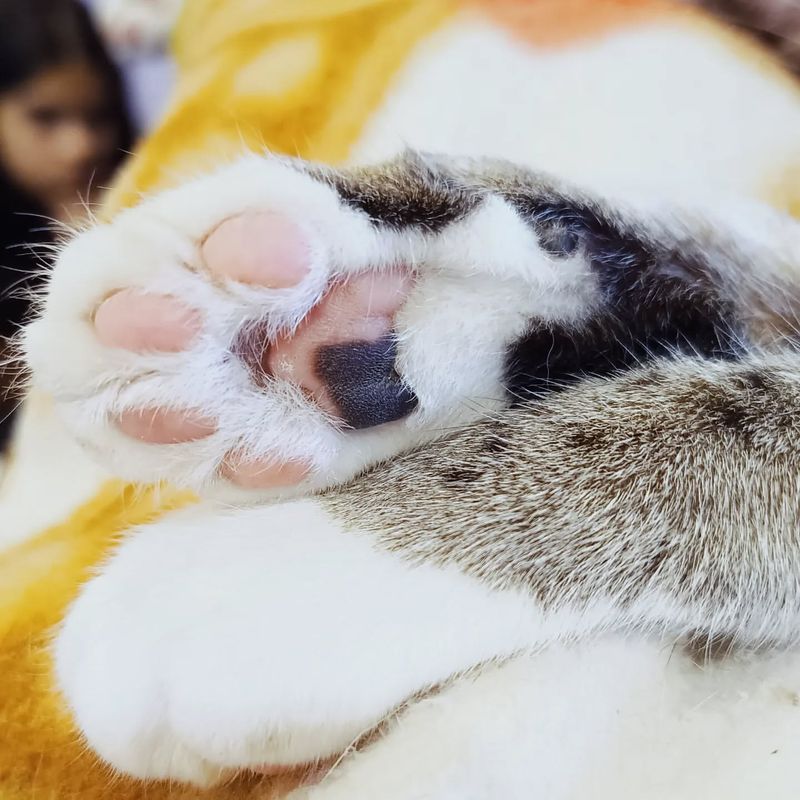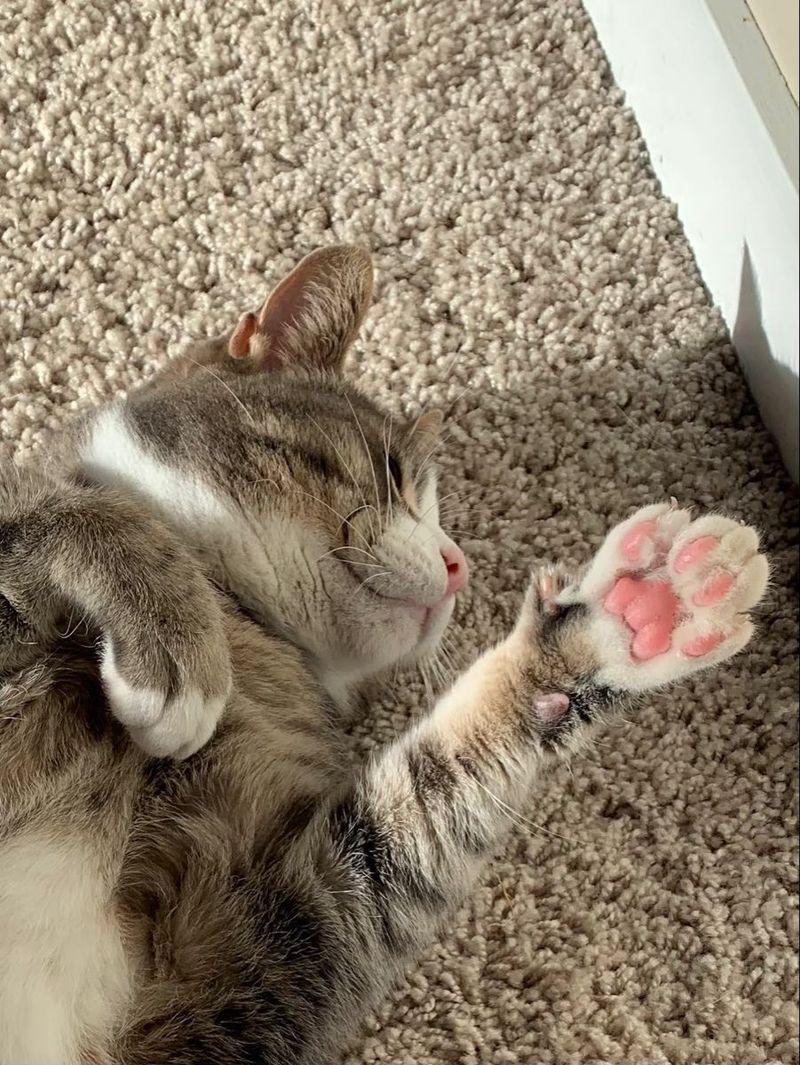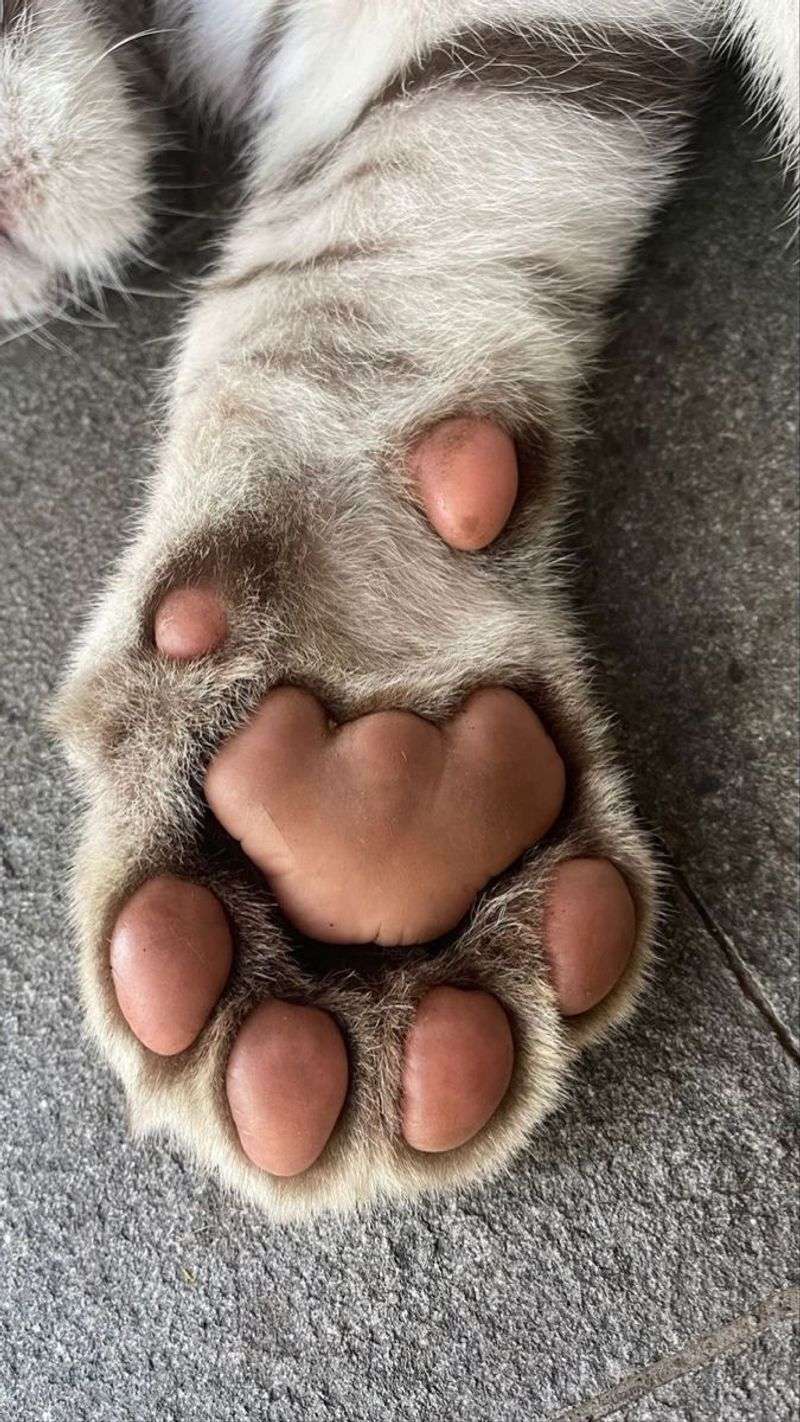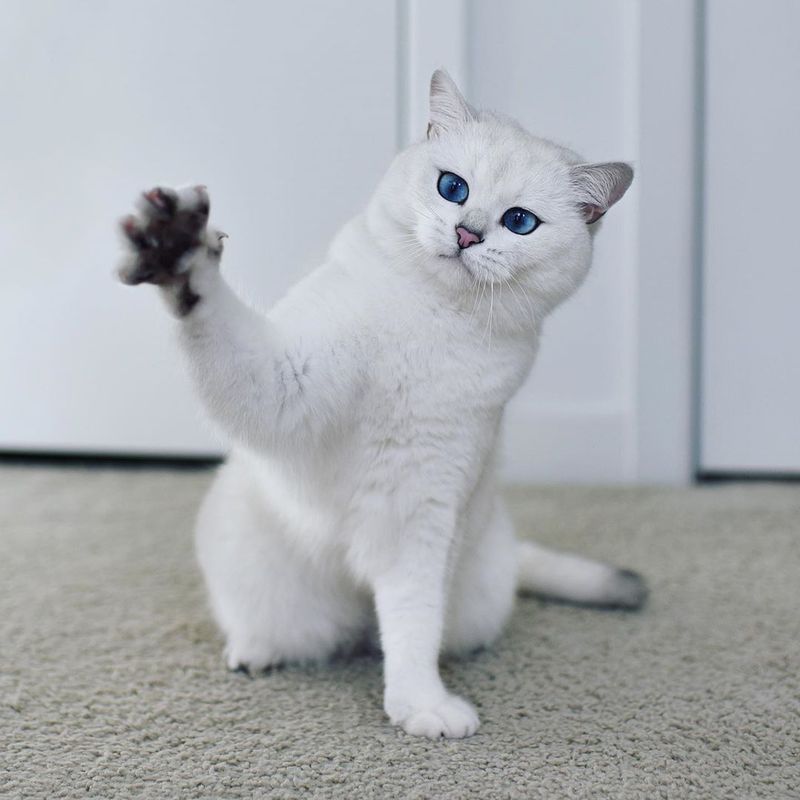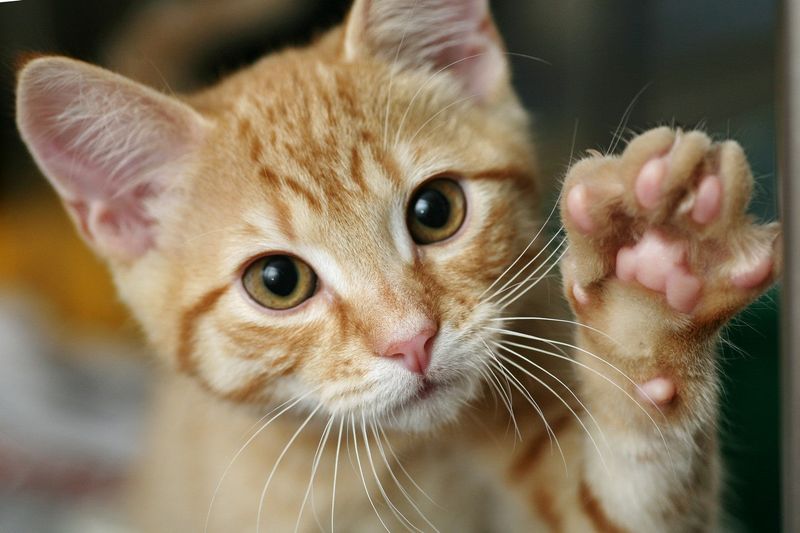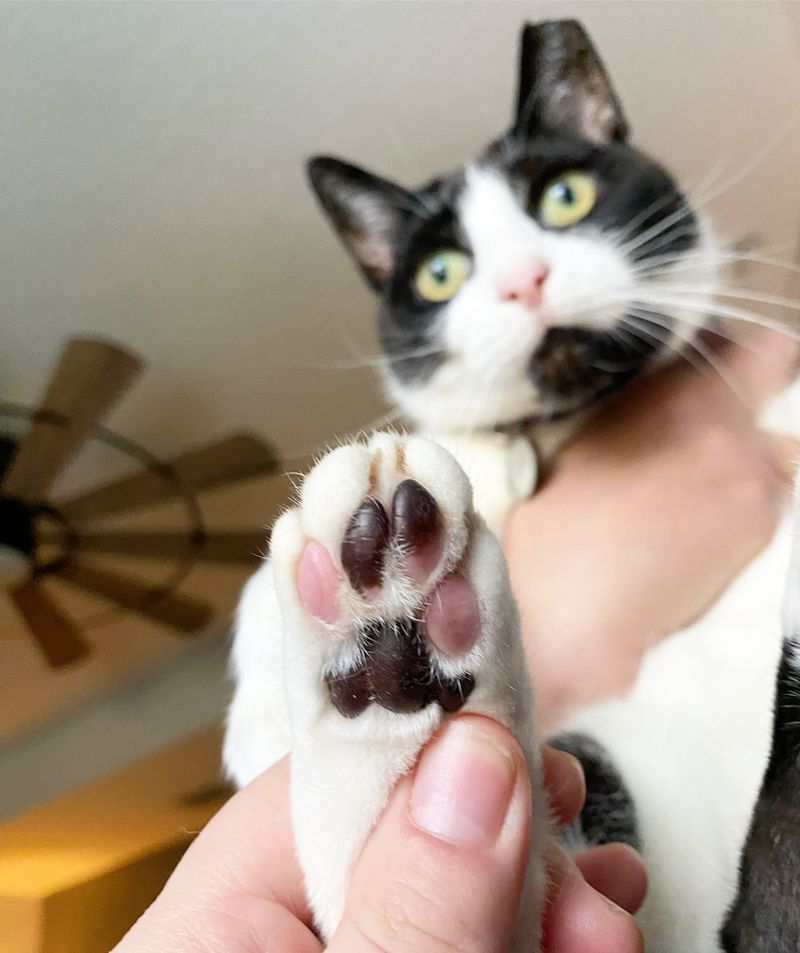📖 Table of Content:
- 1. The Paws’ Sensory Whiskers
- 2. The Unique Paw Pad Colors
- 3. The Importance of Retractable Claws
- 4. Toe Beans: A Cat’s Identity
- 5. Polydactyl Cats and Their Extra Toes
- 6. The Silent Walkers
- 7. The Healing Power of Cat Paws
- 8. Cats’ Paws and Their Temperature Regulation
- 9. The Flexibility and Dexterity of Cat Paws
- 10. The Role of Paws in Communication
- 11. The Evolutionary Design of Cat Paws
- 12. Paw-sitive Impact on Human Health
There’s something undeniably adorable about a cat’s paws—those tiny pads that come in a rainbow of colors and textures, paired with sharp claws that mean business.
But did you know that your feline friend’s paws are more than just cute appendages?
They’re a treasure trove of fascinating features and surprising functions. From being sensory powerhouses to acting as built-in shock absorbers, cat paws are marvels of nature that deserve a little spotlight.
So, whether you’re a long-time cat parent or just a curious feline fan, these 12 fun facts about cat paws will have you marveling at your whiskered companion’s built-in wonder tools.
1. The Paws’ Sensory Whiskers
Cat paws have sensory whiskers known as vibrissae. These whiskers help cats detect changes in their surroundings. Each paw contains several of these specialized hairs, usually located around the paw pads. They are incredibly sensitive to touch and vibration. If you’ve ever noticed your cat carefully treading over a new surface, their vibrissae are probably hard at work. These whiskers help them navigate and understand their environment better. Isn’t it amazing how such a tiny part of a cat can have such an essential role in their daily life? Cat paws truly are nature’s wonders.
2. The Unique Paw Pad Colors
Have you ever paid attention to the color of a cat’s paw pads? They come in a delightful array of colors, often matching the cat’s fur. For example, black cats typically have black pads, while white cats often sport pink ones. Some cats, especially those with mixed fur colors, can have a charming combination of both. These colors are not just for aesthetics; they are a result of the same genetic factors that determine the cat’s coat color. Next time your feline friend pads across the room, take a closer look at those colorful toes!
3. The Importance of Retractable Claws
One of the most intriguing features of a cat’s paws is its retractable claws. Unlike dogs, cats can extend or retract their claws as needed. This ability serves multiple purposes. Retracted claws prevent wear and tear, allowing them to stay sharp for hunting and self-defense. When extended, they provide excellent grip and climbing ability. This retractability is controlled by tendons, similar to how you flex your fingers. It’s part of what makes cats such adept hunters. Their silent, padded walk is, in part, thanks to these cleverly hidden claws.
4. Toe Beans: A Cat’s Identity
The adorable pads on a cat’s paw, often affectionately called ‘toe beans’, are as unique to a cat as fingerprints are to humans. These pads are crucial for a cat’s balance, shock absorption, and traction. Moreover, every cat has a unique set of toe beans, which could potentially be used for identification, much like a fingerprint. These little pads also help cats regulate their body temperature, as they sweat through them during hot weather. The next time you admire your cat’s cute paws, remember you’re looking at a unique part of their identity.
5. Polydactyl Cats and Their Extra Toes
Polydactyl cats have more toes than the typical feline. While most cats have four toes and a dewclaw on each front paw, polydactyl cats can have six or more. This genetic mutation is harmless but gives them quite an advantage in climbing and hunting. These cats are often affectionately called ‘Hemingway cats’ due to Ernest Hemingway’s love for them. Found more commonly in certain regions, especially along the East Coast of North America, these cats are a delight to watch as they navigate their environments with their unique paws.
6. The Silent Walkers
Cats are known for their silent, graceful walk, and their paws play a significant role in this. The soft pads under each paw act as a cushion, absorbing sound as they move. This silence is crucial for hunting, allowing them to sneak up on prey without being detected. The pads also provide traction, helping cats make quick, agile movements. This stealthy gait is a marvel of evolution, perfectly designed for a predator’s lifestyle. Next time your cat silently appears beside you, give a nod to their marvelous, soundless paws.
7. The Healing Power of Cat Paws
Did you know that a cat’s paw has healing properties? When a cat licks its paw, it releases enzymes that help clean and heal wounds. This natural antiseptic property is vital for their well-being. Cats often use their paws to clean their faces and other parts of their bodies, relying on this process to maintain hygiene. This self-grooming behavior is not just about cleanliness; it’s a natural way to keep minor injuries at bay. By licking their paws, cats utilize nature’s very own first aid kit, demonstrating the incredible functionality of their paws.
8. Cats’ Paws and Their Temperature Regulation
Cats use their paws to help regulate body temperature. During hot weather, they sweat through their paw pads to cool down. Conversely, in colder conditions, cats may curl their paws under their bodies to retain heat. This functionality is especially important for outdoor cats facing varying weather conditions. By observing a cat’s paw behavior, you can gain insights into their comfort level regarding temperature. Watch how your cat adjusts its paw position throughout the day, and you’ll better understand how these remarkable creatures maintain their balance with nature.
9. The Flexibility and Dexterity of Cat Paws
Cat paws are incredibly flexible and dexterous, allowing them to perform a variety of movements with ease. From grasping objects to climbing, their paws are built for versatility. Each toe moves independently, enabling precise actions like catching prey or playing with toys. This dexterity is further enhanced by their retractable claws, which they can expertly control. The combination of flexibility and sharp claws makes cats formidable hunters. Additionally, this range of motion helps them maintain balance and agility, essential traits for their active lifestyle. Truly, cat paws are a marvel of adaptation.
10. The Role of Paws in Communication
Cats frequently use their paws to communicate. A gentle tap can signal affection or a playful invitation. Alternatively, a firm swat might express annoyance or set boundaries. Cats also mark their territory with scent glands located between their toes. By kneading surfaces, they leave behind a unique scent that communicates ownership. This form of non-verbal communication is integral to feline social interactions. Understanding these signals can help you interpret your cat’s feelings and intentions. Next time your cat reaches out with a paw, take a moment to consider what message they might be sending.
11. The Evolutionary Design of Cat Paws
Cat paws are a masterpiece of evolutionary design, perfectly adapted for survival. The compact, multi-boned structure allows for incredible flexibility and strength. Padded soles absorb shock, aiding in stealth and agility. This design supports their predatory lifestyle, enabling swift, silent movement through diverse environments. Moreover, retractable claws offer protection and utility, reflecting millions of years of adaptation. These features collectively enhance a cat’s hunting efficiency and self-defense capabilities. Observing a cat in motion reveals the intricate balance of these evolutionary traits. Their paws embody the essence of natural selection at work, ensuring feline success.
12. Paw-sitive Impact on Human Health
The touch of a cat’s paw can have a calming effect on humans. Scientific studies suggest that interacting with pets, including feeling a cat’s paw, can lower stress and anxiety levels. The gentle touch and warmth of a paw can create a sense of connection and comfort. This interaction is not only emotionally rewarding but can also have a positive impact on physical health. Petting a cat, including their paws, may lead to reduced blood pressure and improved mood. The simple act of a cat resting its paw on you can be a powerful therapeutic experience.
